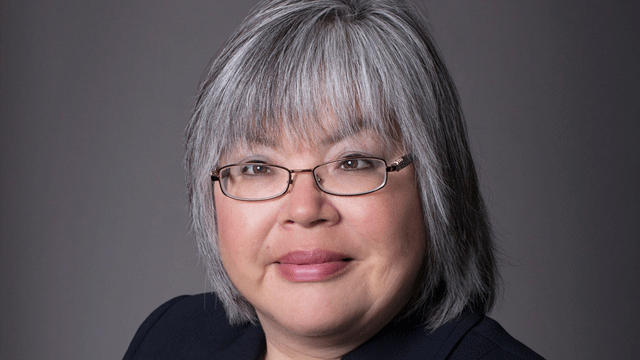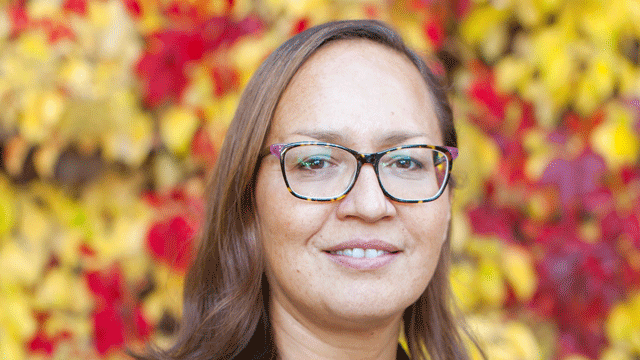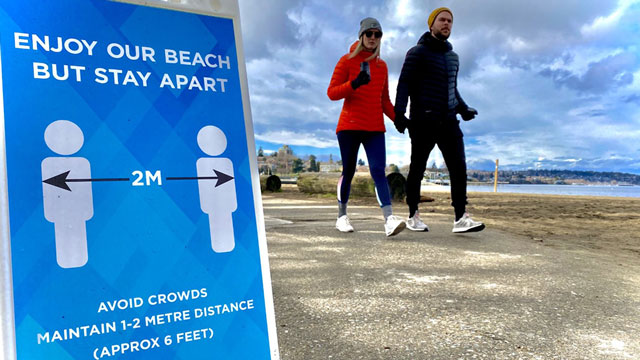
Indigenous peoples have been through pandemics before – and so has Dr. Darlene Kitty.
Kitty was on the front line in 2009 when the H1N1 pandemic hit her home community of Chisasibi in northern Quebec, hospitalizing people at a rate 33 times higher than in the rest of the province.
“In H1N1 we were kind of fighting on our own because it was the first time a big event happened,” says Kitty. “But by the second wave I think we learned by experience and we came out better in the end. But I know there was other First Nations that struggled.”
Kitty is a family physician and director of the Indigenous Program with the University of Ottawa’s faculty of medicine. Speaking from the Chisasibi Hospital, she tells APTN News that “bigger decision makers” like the federal government need to listen and work together with those battling the virus on the ground in remote communities.
“Work with the community to give them what they need and not just kind of a one-time deal. There has to be ongoing support through the next several months when COVID-19 is going to come, if it’s not there already,” she says.
“You’re going to have a second wave, so you’ll have time to pull up your socks after the first wave. They’re anticipating this. It’s similar to other patterns like H1N1.”
Kitty is not alone in pointing out this pandemic might last some time.
Dr. Cornelia Wieman, a psychiatrist originally from Little Grand Rapids First Nation in Manitoba, makes the same point.
“We are looking at a marathon not a sprint, so we all have to first of all ensure that each one of us maintains our wellness, if we can, and be prepared to work at these issues collaboratively over a long period of time. And by long period of time, I mean at least months,” says Wieman, who is both president of the Indigenous Physicians Association of Canada (IPAC) and a senior medical officer with the First Nations Health Authority (FNHA) in Vancouver.
“This isn’t just an outbreak that’s going to last another week or two. We really are in it for the long haul and we don’t know how long this is going to last.
“We have to – every day – kind of work hard but at the same time we can’t run too hard that we’re going to burn ourselves out in these first few weeks,” she says.

(Dr. Cornelia Wieman is the first female Indigenous psychiatrist in Canada. Supplied photo)
Communities across the country are bracing for COVID-19, a pandemic disease caused by the novel coronavirus that first broke out in Wuhan, China, in December 2019.
Though each community prepares for their own sets of challenges, Wieman and Kitty emphasize that Indigenous communities have a shared history of colonialism and intergenerational trauma that can make COVID-19 more stressful.
“Historically we have been harmed quite significantly by pandemics in the past. So there’s this natural kind of anxiety about that,” says Wieman.
“We’ve had obviously a tragic history in Canada with the residential schools experience and ongoing colonialism like the Missing and Murdered Indigenous Women and Girls [MMIWG] and the child welfare issues,” Kitty agrees.
But both doctors says this shared history created a resilient strength that communities can now draw on.
“We’ve been through many traumas and social upheaval over the generations,” says Kitty. “So I think this is a time to gather that strength and resilience and come together as communities and as peoples to use what resources you have in your community. Get the resources you think you need, advocate for your needs. Collaborate with your leadership but also with the health professionals and administrators that provide services in the community.”
“As Indigenous people across this country, we have an incredible resilience. We have survived so many things and we will survive this as well,” Wieman agrees.
“We have so many gifts in some ways that we really make use of: for example the use of humour, which people aren’t talking too much about, although there’s lots of things being shared. But that really is one of our special gifts, and so it’s not making light of the situation at all, but we have used humour for many, many years to help us mitigate the distress we feel.”
On March 11, the World Health Oganization declared the COVID-19 outbreak a pandemic. APTN News is reporting from across the country on the viral outbreak and how it is impacting Indigenous communities. For more information click here: COVID-19
‘Stay calm and move forward’: Tips for life during COVID-19
Humour is only one tip that Wieman, as a psychiatrist focusing on mental health and wellness, offers people navigating life in a pandemic.
“Stay calm and move forward,” she says, “and at least once a day, if not more, try to think of something funny or see something funny: share it with your family, share it with other community members in order to keep everybody’s morale up.”
A pandemic is a stressful situation she says, so it’s normal to feel anxious or fearful.
“There are things that we can do to reduce our levels of stress and anxiety, for example by staying informed but trying not to track the news 24/7 or be constantly on social media.”
She encourages people to seek information from reliable sources and resist the urge to share dubious information on social media.
“The information we’re putting out at First Nations Health Authority [FNHA], the Public Health Agency of Canada [PHAC], and specifically for mental health resources there’s a very good website now up from the Centre for Addiction and Mental Health [CAMH].”
Wieman says things like states of emergency, lockdowns and other measures can be triggering and anxiety-inducing
“For example, one of the recommendations currently is to put on hold any gatherings related to cultural practices, ceremony, et cetera till the virus is no longer being actively transmitted,” she notes.
“Those things can be very challenging for people because it triggers our levels of distress when we’re being told what to do. So what we want to do is have people feel like they have more control over their daily lives right now.”
“We can try to do things to help our attitude and keep a positive outlook. We can definitely maintain our physical distancing. We can engage in positive coping behaviours, so for example going out into the fresh air for walks. We can limit our exposure to potentially upsetting things such as watching the news constantly or being on social media.”
“We have to keep in mind that there are certain things we can’t control,” she continues.
“We can’t control if other people aren’t physically distancing. We can’t control necessarily other people’s behaviours. We can’t even predict what’s going to happen or how long this outbreak is going to last. The news is rapidly changing sometimes on a daily or even hourly basis so we have to do our best to try to stay grounded and stay focused on our own wellness and the wellness of our family and our community members.”

‘Take stock’ and use what you have
Kitty says people need to know that hand washing and physical distancing is critical.
“Wash your hands for twenty seconds with lots of soap and water. Clean your house in the high traffic areas: bathroom, doorknobs, kitchen. Basic cleaning stuff is good for that.”
But how do you wash your hands without clean water? How can you distance yourself in an overcrowded house? How can you get the message out without internet?
“People can stay in their rooms and try to stay away from persons in the family who may have health problems like an Elder or special needs child or someone with fragile health like say a cancer patient.”
“Most First Nations have a radio station and that’s a very important tool for us. It’s important for community to hear those messages repeatedly to reassure them.”
When it comes to addressing long-term health and infrastructure inequities, communities will have to work with and trust governments that have historically let them down.
“Trust is difficult to regain once it has been broken but it is also a two-way street,” says Wieman.
“Even though it is a leap of faith yet again for our communities to accept that we are in a situation where we need to make sure that the government is allocating appropriate resources for us, I do believe they have taken the lessons learned from other outbreaks and are now engaged actively planning with communities for the resources that we need for this particular outbreak.”
While Indigenous community have to trust and work with governments, that two-way street means governments have to respect and work alongside Indigenous sovereignty.
“The self-determining piece is really key here,” Wieman adds.
“Each community – in my opinion – needs to take stock of what their resources are and then act in that self-determining way of how they feel what is best for their community, and it’s going to look different all the way across the country.”
Which, for some, means going out onto the land to seek culturally specific solutions.
“A lot of people are going to the bush,” Kitty notes.
“In a way, the land is healing. It refreshes your body, mind and spirit and you’re away from risk of infection from COVID-19,” she says.
“The land is healing and it’s providing strength for them, and it’s nice to return to that and not have to stay in the community when, eventually, the risk will go up for getting in contact with someone with COVID-19.”









